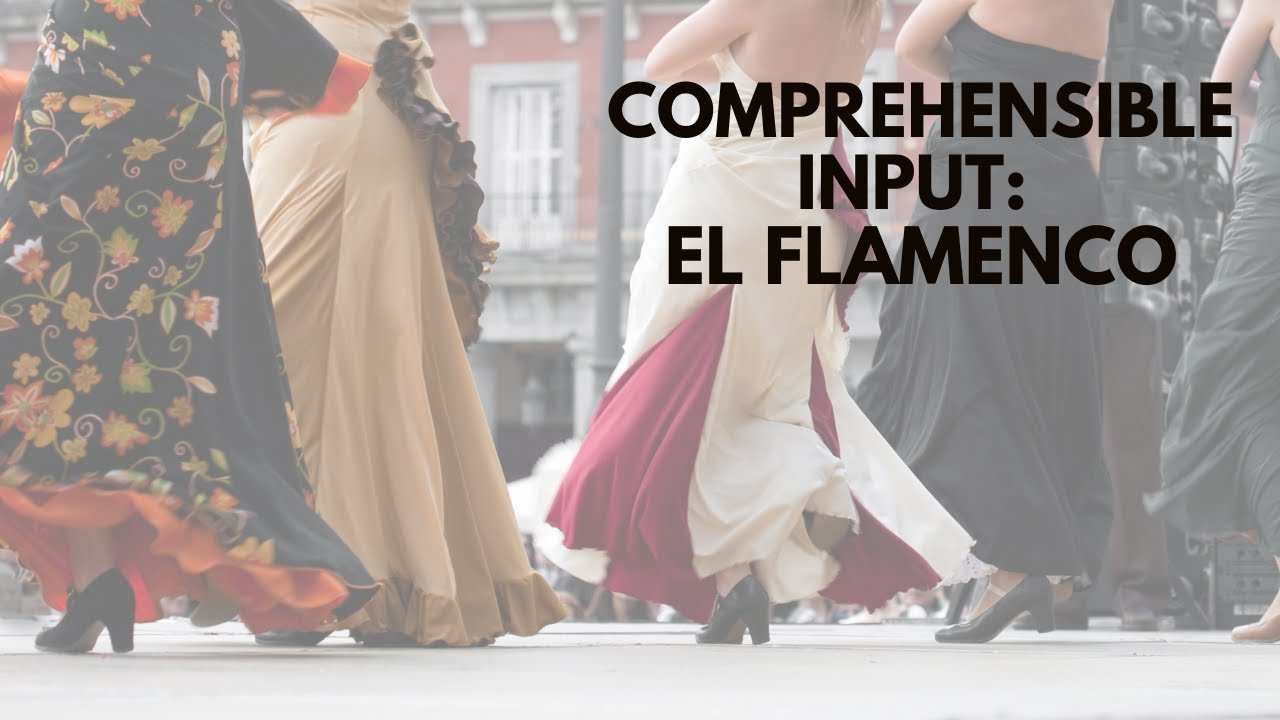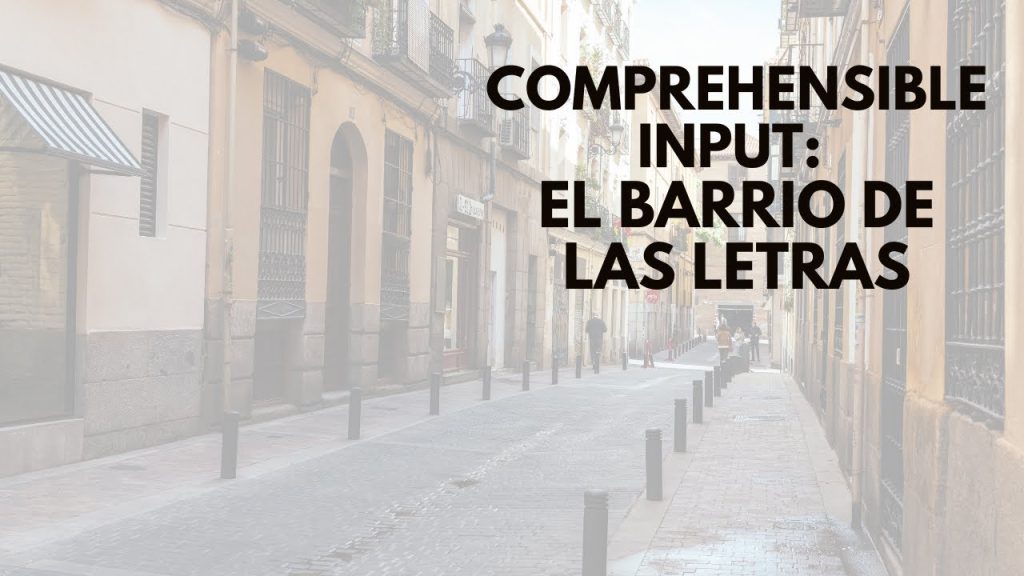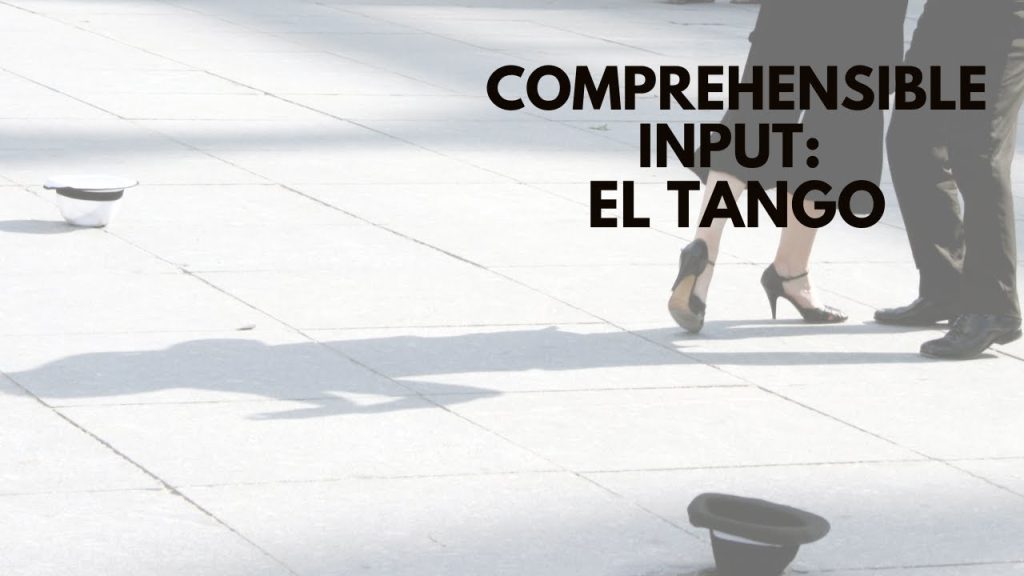
This article explores the essentials of flamenco using the lesson “Comprehensible Input Spanish: El Flamenco”. Read the explanation, practice the vocabulary and phrases, and use the suggested activities to turn input into meaningful output while you learn Spanish.
Overview: What is flamenco?
Flamenco is an artistic expression and a vital part of Spanish culture that originates from Andalucía in southern Spain. It has three fundamental components: el cante (singing), el baile (dance) and el compás (rhythmic structure). There are over thirty varieties of flamenco; many are classified as jondos (deep), pequeños (light) or intermediate styles. Four commonly heard styles are bulerías, soleá, alegrías and rumba.
Types of flamenco performances
Flamenco can be performed in different contexts. The oldest and most rustic form is the juerga, a spontaneous, festive gathering rather than a rehearsed show. Juergas were central to weddings and other Romani celebrations and could also appear at noble or landowner parties.
In the 19th century flamenco changed as cafés cantante opened. Artists formed groups and performances became more formal, rehearsed and presented to paying audiences. This led to the era known as the Edad Dorada del Flamenco. By the 1920s, flamenco also began to be broadcast on the radio, increasing its reach.
Brief history and origins
One of the most interesting aspects of flamenco is that experts disagree about its exact origins, though everyone agrees Andalucía is its birthplace. The roots are complex and likely include influences from the Punjab region, the Romani (gitanos), the Moors, Persians, Celts and Visigoths.
Different narratives exist: some say flamenco mixes dance forms from India, Greece and Roman-era mime, with early accounts of Andalusian women dancing with castañuelas. Jewish communities, Moorish rhythms and instruments such as the laúd (which evolved into the Spanish guitar) shaped the music. The arrival of the gitanos particularly influenced the cante. Another common theory is that flamenco emerged from fusing Romani song with Andalusian folk music.
Useful Spanish vocabulary and phrases for learners
Below are key words and helpful example phrases taken from the lesson. Study these to improve comprehension and to use when discussing flamenco in Spanish.
- El flamenco — Flamenco. Example: “El flamenco viene de Andalucía.”
- El cante — Singing. Example: “El cante es una de las tres componentes del flamenco.”
- El baile — Dance. Example: “El baile expresa emociones intensas.”
- El compás — Rhythm / time signature. Example: “El compás es esencial en bulerías.”
- La juerga — Informal flamenco party. Example: “La juerga era importante en bodas gitanas.”
- Café cantante — 19th-century flamenco venue. Example: “Los cafés cantante profesionalizaron el flamenco.”
- Edad Dorada — Golden Age. Example: “La Edad Dorada del Flamenco comenzó con los cafés cantante.”
- Castañuelas — Castanets. Example: “En el Imperio Romano ya había bailes con castañuelas.”
- Laúd / guitarra española — Lute / Spanish guitar. Example: “El laúd evolucionó hasta la guitarra española.”
- Gitanos — Romani people. Example: “Los gitanos influyeron mucho el cante.”
Practical practice activities
Use these activities to turn input into output and deepen your learning with Comprehensible Input Spanish: El Flamenco.
- Listen-Read-Repeat: Listen to the short presentation, read the Spanish transcript aloud, then listen again while following the text.
- Summary in Spanish: Write a short summary (3–5 sentences) in Spanish about the origins and components of flamenco. This mirrors the lesson’s suggested output activity.
- Vocabulary flashcards: Create cards with the Spanish term on one side and the English definition plus an example sentence on the other.
- Shadowing: Mimic the rhythm and pronunciation by repeating whole sentences immediately after hearing them.
- Mini speaking task: Describe a flamenco performance using at least three vocabulary words from the list (el cante, el baile, compás, juerga).
Spanish transcript
Introducción. El flamenco es un arte y un aspecto importante de la cultura española. Mucha gente viaja a España para ver los espectáculos. El flamenco viene específicamente de Andalucía, en el sur de España. El flamenco tiene tres componentes, el cante, el baile y el compás. En total ya existen más de 30 variedades del flamenco. Dentro de ellas la mayoría son caracterizadas como jondos, pequeños o intermedios. Cuatro estilos muy comunes son bulerías, soleá, alegrías y rumba. Hay varios tipos de espectáculos de flamenco. La juerga es la más vieja y rústica, es espontánea y más una fiesta que nada. La juerga era importante en las bodas y otras celebraciones gitanas. Las juergas también eran para la nobleza y los dueños de tierra durante sus fiestas. Durante el siglo XIX había cambios en el flamenco cuando los cafés cantante abrieron. Grupos de artistas fueron formados y se convirtió en algo más formal. Se convirtieron en espectáculos ensayados y realizados por públicos. Después de la apertura de un café cantante, la época llamada la Edad Dorada del Flamenco nació. En el año 1920 el flamenco empezó a oírse en las emisoras de la radio. Historia del flamenco Uno de los aspectos más interesantes sobre la historia del flamenco es que nadie está de acuerdo con el origen de esta forma de arte. Todos están de acuerdo con el hecho de que Andalucía es el lugar de nacimiento del flamenco. Sus raíces son inciertas, pero se cree que tiene sus orígenes en la Punjaf. Además de tener sus orígenes con los gitanos, tiene influencias de los moros, los persas, los celtas y los visigodos entre otros. La primera historia dice que el flamenco es una mezcla de bailes hindús, griegos y los bailes de las mimas de Roma. Durante el principio del Imperio Romano hay cuentos de las mujeres de Andalucía bailando con castañuelas. Durante aquella época muchos judíos vinieron de España y sus influencias se incorporaron en el arte flamenco. Los moros vinieron con sus ritmos. La llegada de los moros también trajo el laúd, el El instrumento eventualmente se convirtió en la guitarra española. Los gitanos llegaron, que han influido mucho el cante. Otra historia dice que el flamenco nació de la fusión de cante gitano y la música folclórica andaluza.
Conclusion
Flamenco is rich, layered and shaped by many peoples and periods. Use this Comprehensible Input Spanish: El Flamenco lesson to build listening comprehension, vocabulary and speaking confidence. Watch the original presentation, practise the activities above, and try writing a short summary in Spanish to consolidate your learning.
For further study, listen to flamenco examples, attend live performances if possible, and repeat the vocabulary and practice tasks regularly. ¡Buena suerte y disfruta aprendiendo!

